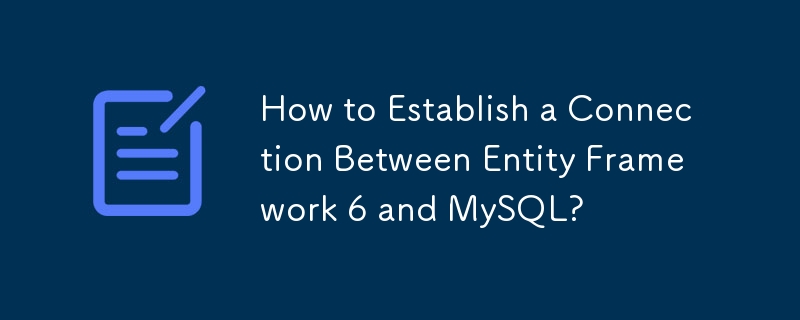

Entity Framework 6 and MySQL Connection Woes
When attempting to establish a connection between Entity Framework 6 and a MySQL database, many developers encounter a puzzling roadblock: the inability to select MySQL as a connection option. This issue has been attributed to a bug in the MySQL plugin, causing frustration among those eager to utilize these technologies together.
Bug-Related Complications
Initially, the proposed workaround involved copying the MySql.Data.Entity.EF6.dll file from the Connector/Net installation directory to the Visual Studio PrivateAssemblies folder. However, this fix proved ineffective for some users, including the author of the issue.
Fallback Solution to Entity Framework 5
This setback led the author to temporarily downgrade to Entity Framework 5 until MySQL resolved the issue. This workaround allowed for the continuation of development while awaiting a more permanent solution.
A Resolution Emerges
Finally, a solution emerged that required adding three specific DLLs: MySql.Data.dll, MySql.Data.Entity.EF6.dll, and MySql.Web.dll. Additionally, specific configuration changes in the web config file were required for EntityFramework. This comprehensive approach ultimately enabled the successful establishment of an Entity Framework 6 model with MySQL.
Essential Preconditions
It is crucial to ensure that the MySQL plugin for Visual Studio version 1.1.3 and MySQL connector .net version 6.8.3 are both installed. These specific versions are essential for the successful implementation of this solution.
The above is the detailed content of How to Establish a Connection Between Entity Framework 6 and MySQL?. For more information, please follow other related articles on the PHP Chinese website!
 Introduction to interface types
Introduction to interface types
 How to resize pictures in ps
How to resize pictures in ps
 What to do if postscript cannot be parsed
What to do if postscript cannot be parsed
 Win10 does not support the disk layout solution of Uefi firmware
Win10 does not support the disk layout solution of Uefi firmware
 What are the oracle wildcards?
What are the oracle wildcards?
 Detailed explanation of sprintf function usage
Detailed explanation of sprintf function usage
 What are the four big data analysis tools?
What are the four big data analysis tools?
 How to connect asp to access database
How to connect asp to access database




